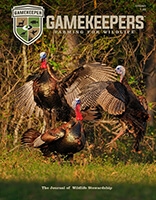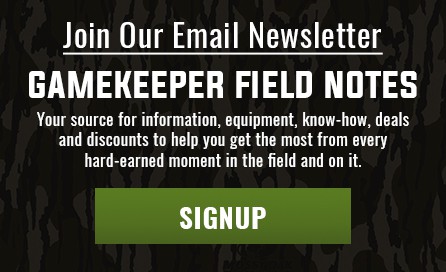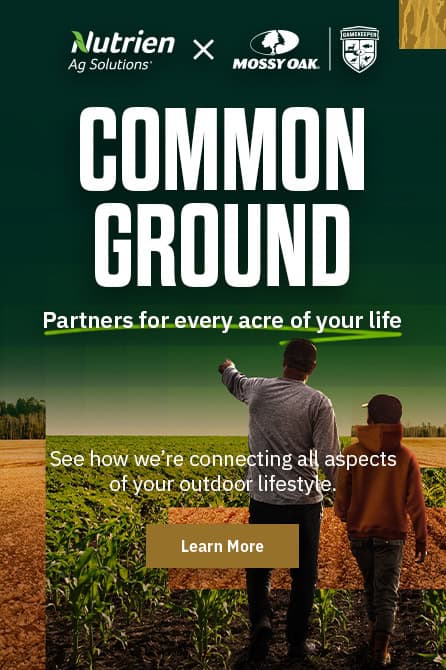In the 1990s through the early 2000s, deer management trended towards Quality Deer Management (QDM), while hunting access remained relatively easy to obtain. You could ask a neighbor, knock on a handful of doors, or offer to help a farmer in return for hunting access. However, as the paradigm of QDM created a seismic shift in the deer management world, simultaneously we experienced generational change in rural landownership – leading to reduced access and hunting satisfaction for many. New landowners may have purchased the tract to hunt themselves, they might live out of state and desire to restrict access on their investment for liability concerns, or the farm was divided up when willed to the next generation causing loss of wildlife habitat through suburban growth. These all seem to be more common situations in our current landscape than 20 or 30-years ago.
A Changing Paradigm
As the pendulum of deer management swung towards QDM over the last few decades, a novel approach to achieving management goals appeared – Deer Management Cooperatives (DMCs). In most cases, these cooperatives organically formed to improve hunting quality across multiple properties with hunters and neighboring landowners collectively managing their properties under similar QDM goals. However, an unintended advantage of these local cooperatives was an anecdotal increase in hunter satisfaction among their members. Until recently, this increase has been only anecdotal.

Many cooperatives have yearly meetings where locals can meet with other landowners in the area, make a game plan for their harvest goals, and discuss changes they may want to make. Meetings like this are a great way to (Hunter Pruitt)

Over the last few years, fresh research has begun to look at deer management cooperatives and their impact on hunter satisfaction, deer harvest, and social connections within this subset of hunters to see how they perceive their experiences compared to the larger hunting community. This information is particularly important for state agency personnel looking to implement an organic landscape-scale way to efficiently reach deer hunters and create more satisfied hunters in their states. At the same time, a more cohesively managed and connected landscape not only helps game animals like deer or turkey, but provides connected landscapes for non-game animals. By utilizing deer hunter enthusiasm for quality or trophy deer management, the landscape as a whole can see measurable gains in connectivity with landowners managing collectively.
Hunter Satisfaction within Deer Co-ops
A 2021 paper (Mitterling et al.) done at Michigan State University described increased hunter satisfaction within a group of deer co-ops in Southern Michigan. Hunter satisfaction was positively correlated with perceived “fit” within a co-op and with hunter-goals aligning with other hunters in their co-op. In one study, over 76% of Tennessee hunters preferred hunting areas practicing QDM. Within the same vein, research that I conducted at the University of Georgia (Pruitt et al. 2021) surveyed important attributes & hunter satisfaction within 45 deer management cooperatives across five states: Georgia, Missouri, Michigan, New York, and Texas. Across all states we described increased hunter satisfaction within deer management cooperatives as time increased within co-ops as well as certain “attributes” of DMC affiliation that led to increased satisfaction with the member experience.
Cooperatives varied from state to state with regional differences, but some attributes were “important” and provided satisfaction for co-op members across all states. These would be the areas that co-ops currently do a good job producing results for their members (ie. Fig 1: Is it Important? Are you Satisfied?), and those that are important and they want to see improve:
Graph snippet provided from Pruitt et al. 2021 – insert in this area of the article (If a fully editable graph is needed, I can provide one upon request).
Description for chart: Importance-satisfaction analysis for all deer cooperative members surveyed as part of Pruitt et al. 2021 in Georgia, Missouri, Michigan, New York, and Texas. Dat-centered crosshairs divide 22 measured attributes into 4 quadrants based on their level of importance and satisfaction.
High Importance/ High Satisfaction “Keep up the Good Work”
B – Seeing Deer when Hunting
F – The antler and body size of bucks harvested
G – The number of fawns seen each season
H – Cooperative restrictions on bucks that limit buck harvest more than current state restrictions
J – Cooperative members sharing similar harvest goals
Q – Relationships between Cooperative members/hunters
T – Forming relationships with neighboring landowners
High Importance /Low Satisfaction “Concentrate Here”
A – Seeing mature bucks when hunting
D – Harvesting mature bucks
I – Neighbors following QDM practices
L – Habitat for game animals other than deer
N – Increased habitat management on your co-op
Low Importance/High Satisfaction “Possible Overkill”
C – The number of deer you kill
E – Harvesting female deer
P – The size of your co-op
Low Importance/Low Satisfaction “Low Priority”
M – Habitat for non-game wildlife
O – Land stewardship on your cooperative
R – The amount of technical support received from your state wildlife agency
S – The amount of technical support from conservation non-governmental organizations (NGOs)
U – Land-lease value of your cooperative property
V – Preventing crop damage from wildlife

Cooperatives can consist of a handful of landowners, or a few dozen landowners with over thousands of acres. The great part about co-ops is that each one is different and tailored to your area. If you a see a sign like this, your neighbor may just be interested in starting a co-op or is already a member of one.(Hunter Pruitt)

Talking with your neighbor and discussing your deer hunting goals may provide you with a more satisfied hunting experience in the long run. If you are both aware of each other’s goals, you can make management decisions that benefit you both – even if they aren’t managing for the same game species as you.(Hunter Pruitt)
As you can see, what is important to deer co-op members across these five states highly aligns with many gamekeeper goals! For example, co-op members/hunters are satisfied with deer management aspects like: “antler and body size of bucks harvested” but want to “harvest more mature bucks.” Co-ops are currently producing hunts where members are satisfied with “seeing deer when hunting” but members want to “see more mature bucks when hunting.” These are all areas where overarching gamekeeper goals align with deer co-ops regarding deer management. Who doesn’t want to harvest more mature bucks, see more deer when hunting, and be satisfied with the current antler and body size of bucks harvested? Aren’t these aspects of deer management that gamekeepers manage to improve year-round through habitat and harvest goals?
Not only are co-ops producing quality deer hunting opportunities with satisfied landowners and hunters, but they are also offering the opportunity to increase habitat management across a large area. Deer co-op members can increase habitat management by working with neighbors to manage wildlife and wildlife habitat.
Two attributes described as important to co-ops that thier members were not quite satisfied with are: “Habitat for game animals other than white-tailed deer” and “increased habitat management on your co-op” – both areas important to gamekeepers! This overlap between current co-op member goals and the gamekeeper lifestyle provide opportunity for co-ops to be a “tool” in the gamekeeper’s toolbox for taking your property to the next level.
Even if deer management isn’t the most important wildlife management goal for you and your family – but managing wildlife habitat for quail, turkey or small game is – established deer co-ops will likely welcome you into the fold with open arms. Many of the habitat management techniques used for turkey or quail management benefit your neighbor’s deer management goals, while their deer management goals increase your potential deer hunting satisfaction. Therefore, when deciding to join or form a local deer management co-op with neighbors – keep these potential positives for all parties in mind.
Can a deer co-op accomplish your Gamekeeper goals?
Many gamekeepers are deer hunters, but not all deer hunters are gamekeepers. This is where deer co-ops have the potential to bridge the gap for both groups. Chances are, someone in your area is investing in their deer management program as much as you are. Maybe a neighbor a couple properties over would love to learn how you are managing your piece of ground with prescribed fire and food plots. Maybe a conversation with a neighbor helps you realize that you both are passing on some young bucks in hopes to catch up with them next season. Deer cooperative members share many of the goals for habitat & deer management that gamekeepers do. This overlap in goals provides an opportunity to increase hunter satisfaction rates for involved hunters and habitat management goals for gamekeepers – thus we find ourselves in a win-win situation.
Deer co-ops have been organically established by local hunters since the QDM paradigm shift occurred, providing a solution to the glaring problem of implementing QDM on small acreages with varying deer management styles. As researchers learn more about the types of deer hunters and landowners voluntarily working with neighbors to accomplish their deer management goals, gamekeepers can use this info to decide: “Is a co-op right for my management goals?”
Cooperatives provide an avenue for hunters to increase their hunting satisfaction, while connecting with neighbors that may already manage habitat for other wildlife. As gamekeepers we are tasked with managing and stewarding landscapes and habitats for wildlife. The prescribed burn through a pine stand conducted solely to help turkey nesting and brooding habitat is utilized by fawns to bed and forage in the spring, migrating songbirds for refuge on their journey south each winter, and pollinators to lay eggs each growing season – hatching into bugging forage for poults. When we realize that we are stewards for our land, and our piece of ground is a piece in the larger landscape connected and influenced by our neighbors, we gain satisfaction from a more integrated form of wildlife management that co-ops provide. As a gamekeeper, learning where our interests align with differing groups within the wildlife management community can help us decided if starting or joining a local wildlife management cooperative is desired in our situation.
Will I be More Satisfied as a Co-op Member?
Every farm and situation is different. I have seen differences in how co-ops are formed and maintained across the country. In the south, co-ops tend to physically connect along property boundaries, while co-ops in the north tend to enroll as many properties in a given township as they can to accomplish deer management goals. Some states have programs or staff that help landowners form and maintain co-ops like in Missouri, while other states have private land deer management assistance programs (DMAP) that can aid co-ops, establish harvest goals, and help them apply for increased antlerless tags. Each state and region are different, but co-ops can form and thrive in them all.
I have personally helped form QDM co-ops in multiple regions of the county, and in each instance the surrounding dynamics at play are different. One property may have public land close, while one is in a sea of small private land parcels. Goals are different on each – and that’s alright. I believe that deer co-ops provide the needed flexibility to produce satisfied members across so many dynamic situations, locations, and types of people. I haven’t seen a single “type” of person that make up all co-ops. Some people are farmers, some are hunters, some are businessmen, while others are loggers. Co-ops are made up of blue-collar and white-collar folks all working together to manage wildlife collectively on their ground. The same is true for gamekeepers. Some gamekeepers grew up on generational family land, while others just purchased a piece of ground they want to improve. It is up to each of us how much satisfaction comes from working with a neighbor to manage wildlife. Cooperatives provide the runway to take your wildlife management program to the next level – and you may just find a little extra satisfaction as your co-op grows and gets off the ground!

Wildlife cooperatives across the nation offer a way to manage varying species across a broad range of landscapes. Cooperatives may form under QDM management to better manage a deer herd but can impact other game and non-game species on those farms like turkey, quail, or waterfowl.(Mossy Oak)






